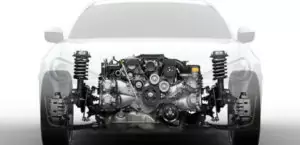The 2.0-liter Saab B205E turbo engine was assembled by the Swedish concern from 1998 to 2009 and was installed on the first generation of the company’s most popular models with indices 9-3 and 9-5. This motor, in essence, was a lightweight modification of the well-known B234E turboset.
2.0-liter H-series engines: B204E, B204i, B204L, B205E.
Specifications
| Production years | 1998-2009 |
| Displacement, cc | 1985 |
| Fuel system | distributed injection |
| Power output, hp | 150 |
| Torque output, Nm | 240 |
| Cylinder block | cast iron R4 |
| Block head | aluminum 16v |
| Cylinder bore, mm | 90 |
| Piston stroke, mm | 78 |
| Compression ratio | 8.8 |
| Features | intercooler |
| Hydraulic lifters | yes |
| Timing drive | chain |
| Phase regulator | no |
| Turbocharging | Garrett GT1752S |
| Recommended engine oil | 0W-30 |
| Engine oil capacity, liter | 4.0 |
| Fuel type | petrol |
| Euro standards | EURO 3/4 |
| Fuel consumption, L/100 km (for Saab 9-5 2000) — city — highway — combined |
12.6 6.9 9.0 |
| Engine lifespan, km | ~250 000 |
The engine was installed on:
- Saab 9-3 I (YS3D) in 2000 – 2002;
- Saab 9-5 I (YS3E) in 1998 – 2009.
Disadvantages of the Saab B205E engine
- Turbo engines of this series suffer from constant oil leaks, especially at the joints;
- Hydraulic lifters do not differ in endurance and can knock up to 150,000 km;
- On the same run, the oil pump is already decently worn out, which is dangerous for liners;
- Oil scraper rings lie at about 200,000 km and oil consumption appears;
- Lightweight pistons do not tolerate serious forcing and can simply burn out;
- Another standard procedure is to get rid of rattling balancers;
- The weak points of the engine also include a turbine, an ignition cassette and an electric throttle.






